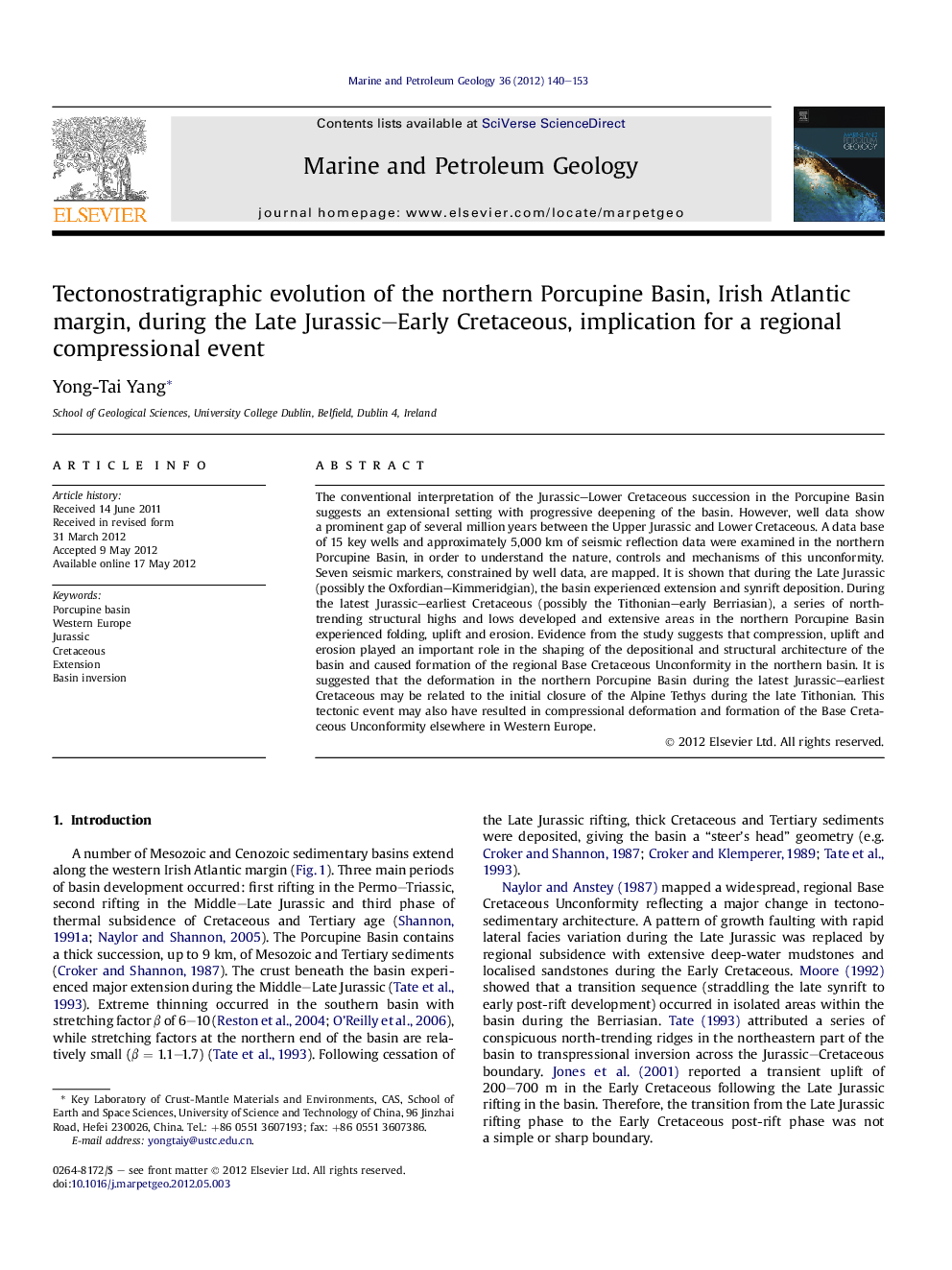| Article ID | Journal | Published Year | Pages | File Type |
|---|---|---|---|---|
| 4695985 | Marine and Petroleum Geology | 2012 | 14 Pages |
The conventional interpretation of the Jurassic–Lower Cretaceous succession in the Porcupine Basin suggests an extensional setting with progressive deepening of the basin. However, well data show a prominent gap of several million years between the Upper Jurassic and Lower Cretaceous. A data base of 15 key wells and approximately 5,000 km of seismic reflection data were examined in the northern Porcupine Basin, in order to understand the nature, controls and mechanisms of this unconformity. Seven seismic markers, constrained by well data, are mapped. It is shown that during the Late Jurassic (possibly the Oxfordian–Kimmeridgian), the basin experienced extension and synrift deposition. During the latest Jurassic–earliest Cretaceous (possibly the Tithonian–early Berriasian), a series of north-trending structural highs and lows developed and extensive areas in the northern Porcupine Basin experienced folding, uplift and erosion. Evidence from the study suggests that compression, uplift and erosion played an important role in the shaping of the depositional and structural architecture of the basin and caused formation of the regional Base Cretaceous Unconformity in the northern basin. It is suggested that the deformation in the northern Porcupine Basin during the latest Jurassic–earliest Cretaceous may be related to the initial closure of the Alpine Tethys during the late Tithonian. This tectonic event may also have resulted in compressional deformation and formation of the Base Cretaceous Unconformity elsewhere in Western Europe.
► Report the evolution of the northern Porcupine Basin in detail. ► Document an inversional event during the Jurassic–Cretaceous transition. ► Suggest the initial closure of the Alpine Tethys might cause the compression.
